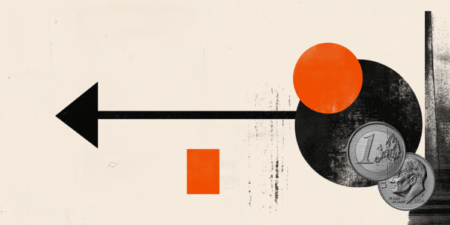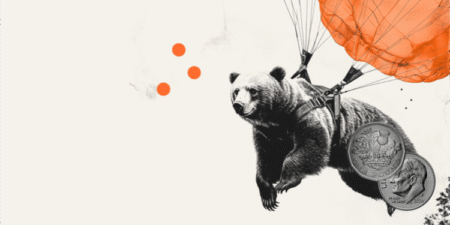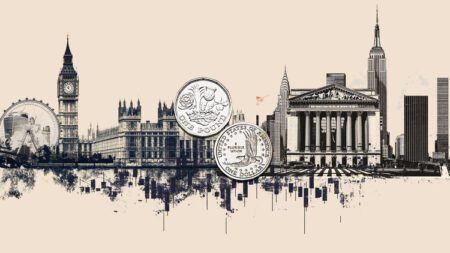- The Japanese Yen attracts fresh buyers as a hotter CPI print reaffirms BoJ rate hike bets.
- Hopes for an early US-Japan trade deal and a weaker USD further weigh on USD/JPY.
- The bullish JPY fundamental backdrop supports prospects for deeper losses for the pair.
The Japanese Yen (JPY) strengthens further against a broadly weaker US Dollar (USD) and drags the USD/JPY pair back below mid-143.00s during the Asian session on Friday. Hotter consumer inflation figures released from Japan earlier today reaffirmed market bets that the Bank of Japan (BoJ) will continue raising interest rates, which, in turn, is seen underpinning the JPY.
Apart from this, hopes that Japan will eventually strike a trade deal with the US turn out to be another factor lending support to the JPY. The USD, on the other hand, attracts fresh sellers in the wake of US fiscal concerns, renewed US-China trade tensions, and expectations that the Federal Reserve (Fed) will cut rates further in 2025. This, in turn, favors the USD/JPY bears.
Japanese Yen bulls have the upper hand amid rising BoJ rate hike bets
- Data released by the Japan Statistics Bureau this Friday showed that the National Consumer Price Index (CPI) climbed by 3.6% YoY in April. Further details revealed that the National core CPI, which excludes volatile fresh food prices, arrived at 3.5% YoY in April versus 3.2% prior and 3.4% expected.
- Furthermore, a gauge that excludes both fresh food and energy prices, and is closely watched by the Bank of Japan, edged up to the 3% YoY rate from 2.9% previous. Adding to this, expectations that higher wages will boost prices should maintain pressure on the BoJ to continue raising interest rates.
- In fact, BoJ officials recently showed a willingness to hike interest rates further if the economy and prices improve as projected. In contrast, traders ramped up their bets for further interest rate cuts by the Federal Reserve following last week’s softer US Consumer Price Index (CPI) and the Producer Price Index (PPI).
- US President Donald Trump’s “One Big, Beautiful Bill” was passed by the House of Representatives Thursday and is headed to the Senate for approval. If it clears that hurdle and becomes law, the sweeping tax cut and spending bill could worsen the US budget deficit at a faster pace than previously expected.
- China’s Commerce Ministry on Wednesday warned of legal action against individuals or organizations implementing US export restrictions on Huawei’s AI processors. This highlights persistent tensions between the world’s two largest economies despite a preliminary trade agreement reached in Geneva earlier this month.
- Meanwhile, the standoff revives fears of an economic downturn in the US, which, in turn, fails to assist the US Dollar to build on Thursday’s gains led by upbeat US macro data. The US Department of Labor (DOL) reported that Initial Jobless Claims fell to 227K last week, pointing to a still resilient labor market.
- Adding to this, a preliminary report released by S&P Global showed that the US Composite PMI Output Index rose to 52.1 in May from 50.6 in the previous month. The Services PMI increased to 52.3, compared to April’s 50.8, reaching a two-month high, while the Manufacturing PMI came in at 52.3.
- On the geopolitical front, Israel’s military continued to pound the Gaza Strip and block desperately needed food aid. Adding to this, Trump reportedly told European leaders that Russian President Vladimir Putin isn’t ready to end the war as he thinks he is winning, which should further underpin the safe-haven JPY.
- Friday’s US economic docket features the release of New Home Sales data, though the focus will be on speeches by influential FOMC members, which will drive the USD demand and the USD/JPY pair. Nevertheless, the fundamental backdrop suggests that the path of least resistance for spot prices is to the downside.
USD/JPY accelerate the fall once 61.8% Fibo. around the 143.25 area is broken
The overnight failure near the 144.40 confluence support breakpoint, comprising the 50% retracement level of the April-May rally and the 200-period Simple Moving Average (SMA) on the 4-hour chart, and the subsequent slide, favors bearish traders. This, along with negative oscillators on hourly/daily charts, validates the near-term negative outlook for the USD/JPY pair.
From current levels, the 143.25 area, or the 61.8% Fibonacci retracement level, could offer some support ahead of the 143.00 round figure. This is followed by the 142.80 region, or over a two-week low touched on Thursday, below which the USD/JPY pair could accelerate the fall towards the next relevant support near the 142.40-142.35 area before dropping to the 142.00 mark.
On the flip side, a sustained strength beyond the 144.35-144.40 confluence support-turned resistance could trigger a short-covering move and lift the USD/JPY pair to the 145.00 psychological mark. This is followed by the 145.35-145.40 hurdle, or the 38.2% Fibo. retracement level, which if cleared decisively might shift the near-term bias in favor of bullish traders.
Bank of Japan FAQs
The Bank of Japan (BoJ) is the Japanese central bank, which sets monetary policy in the country. Its mandate is to issue banknotes and carry out currency and monetary control to ensure price stability, which means an inflation target of around 2%.
The Bank of Japan embarked in an ultra-loose monetary policy in 2013 in order to stimulate the economy and fuel inflation amid a low-inflationary environment. The bank’s policy is based on Quantitative and Qualitative Easing (QQE), or printing notes to buy assets such as government or corporate bonds to provide liquidity. In 2016, the bank doubled down on its strategy and further loosened policy by first introducing negative interest rates and then directly controlling the yield of its 10-year government bonds. In March 2024, the BoJ lifted interest rates, effectively retreating from the ultra-loose monetary policy stance.
The Bank’s massive stimulus caused the Yen to depreciate against its main currency peers. This process exacerbated in 2022 and 2023 due to an increasing policy divergence between the Bank of Japan and other main central banks, which opted to increase interest rates sharply to fight decades-high levels of inflation. The BoJ’s policy led to a widening differential with other currencies, dragging down the value of the Yen. This trend partly reversed in 2024, when the BoJ decided to abandon its ultra-loose policy stance.
A weaker Yen and the spike in global energy prices led to an increase in Japanese inflation, which exceeded the BoJ’s 2% target. The prospect of rising salaries in the country – a key element fuelling inflation – also contributed to the move.
Read the full article here















